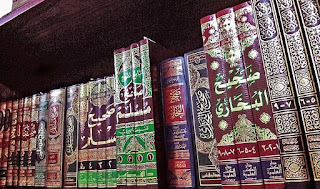example for him who looketh unto Allah and the
last Day, and remembereth Allah much.
[Qur’an 33: 21 ]
For a Muslim, the prophetic Hadith is the secondary document after the Qur’an. In this era of technological advancement and communications by cyber space, the texts from various collections of Hadith 1, comprising varying classifications from Maudu (fabricated – forged) to Sahih (authentic – sound) are appearing on the Internet. Now, a non-Muslim can enter into dialogue with a Muslim, quoting the translated text from any hadith that has been published or posted on an Islamic website. After the "published identification number" and/or the "name of the compiler" are quoted, either party can easily assert a point of view or press an agenda, irrespective of the authenticity of the isnad (chain of narrators) of the identified hadith whose chain of transmission could be broken and not reach the Prophet. The majority of internet surfers have little or no background knowledge of the historical facts behind the compilation of the corpus of Hadith and will be more inclined to focus on the matn (content of narrative). It is not an easy task even for learned scholars to establish how reliable were these chains of narrators and/or compilers.
The discussion of Hadith on the internet raises larger questions about their classifications and authenticity. Are the sometimes outrageous and bizarre narratives of the Hadith going to be considered normative of Islam by non-Muslims who read them at Islamic websites?
The intention of this in-depth critical study is to defend the True Islam from being maligned and distorted on the internet under the guise of "Prophet's Pronouncements and Acts", when these hadiths are not his but are falsely attributed to him. Readers should keep the intention of this study in mind while reading this work, prepared after years of research on this sensitive subject.
Please Read This Book Judiciously And With an Open Mind To Know The Truth
Open as Google Doc: https://bit.ly/3jK25xG




